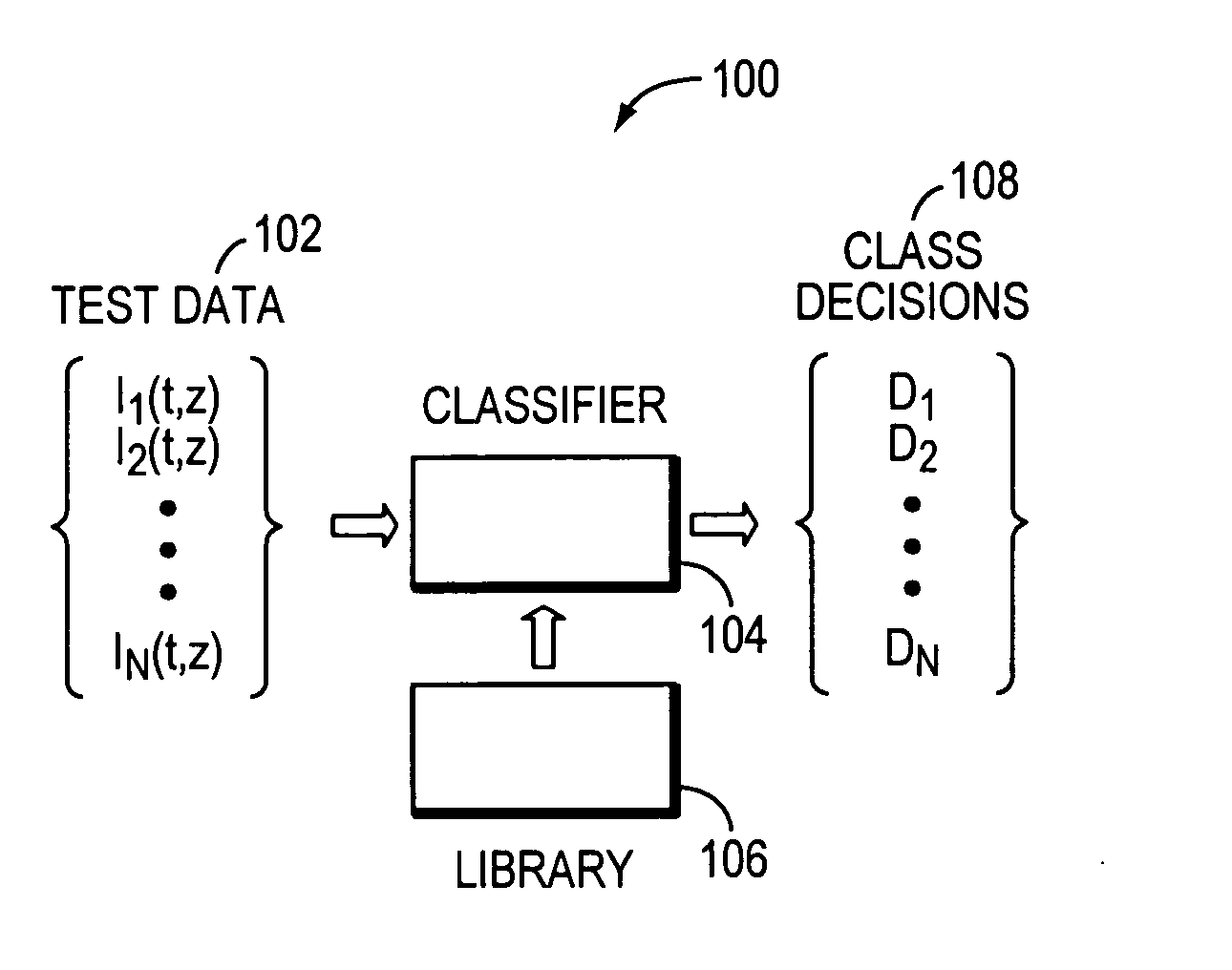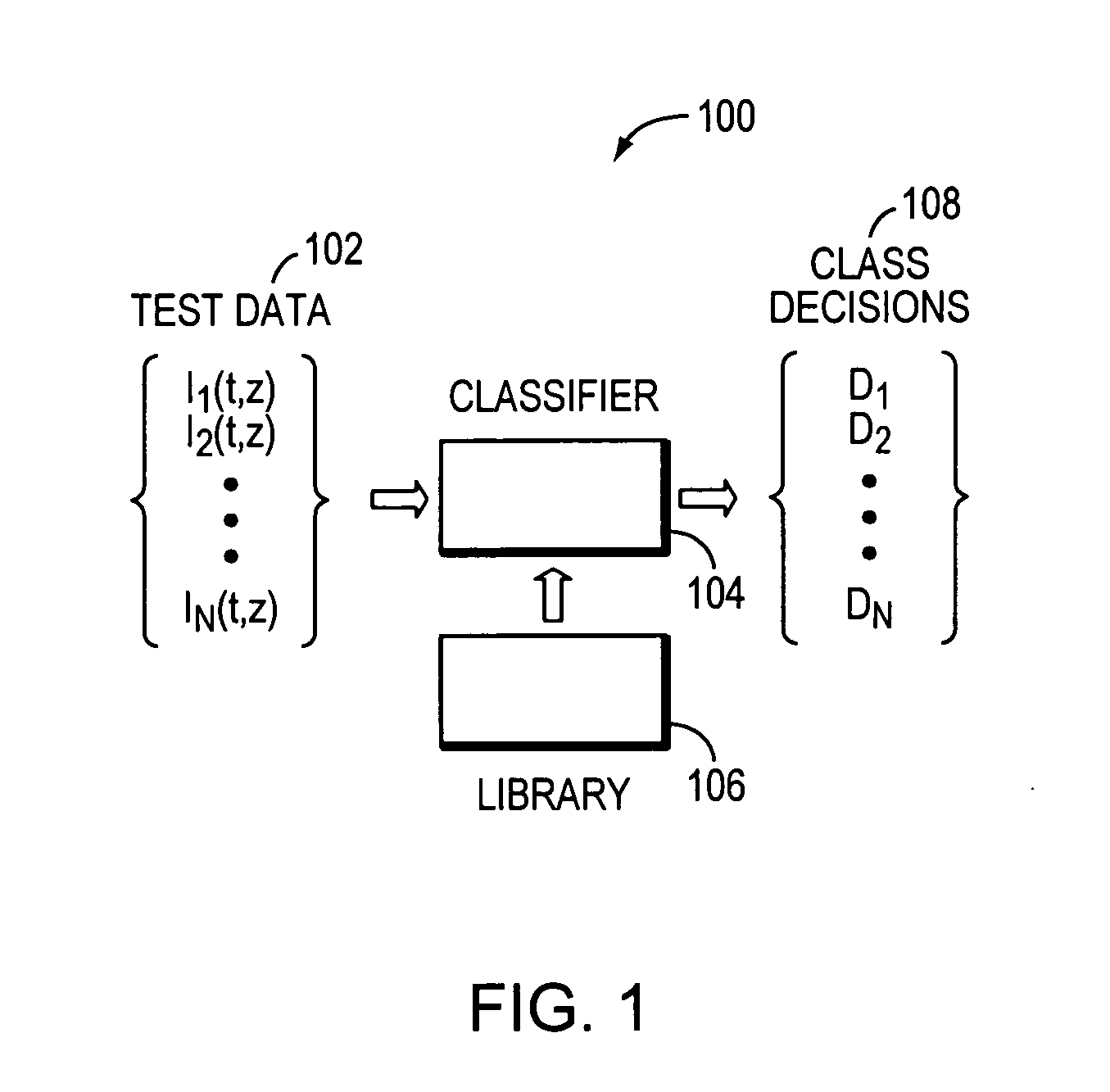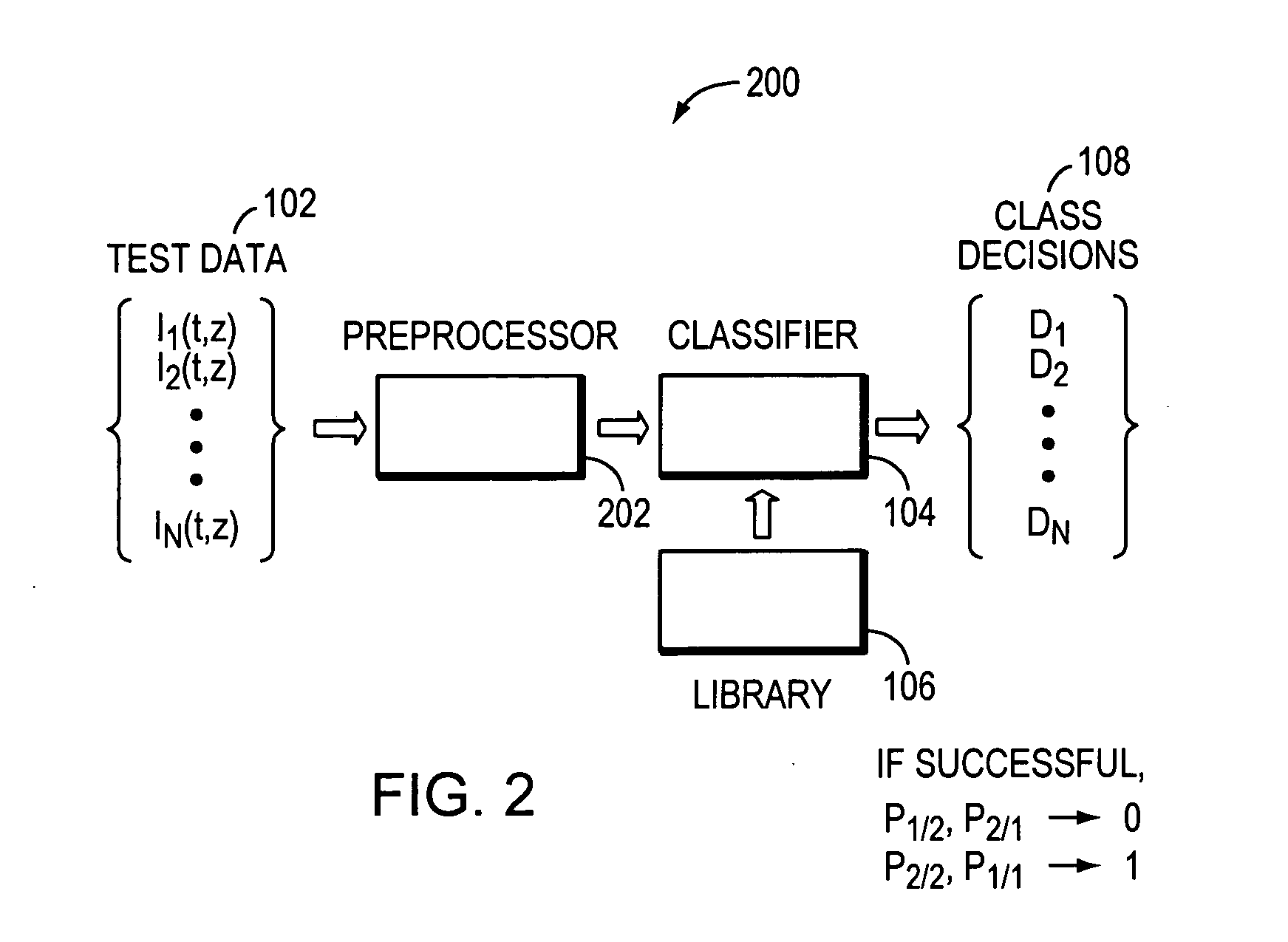Alignment and autoregressive modeling of analytical sensor data from complex chemical mixtures
a sensor data and complex chemical mixture technology, applied in the field of chromatographic data analysis, can solve the problems of difficult and burdensome task of analyzing chromatographic data for complex mixtures, imperfect alignment of data, and difficult to determine which peaks appear reproducibly across chromatograms, and achieve the effect of accurately identifying related peaks
- Summary
- Abstract
- Description
- Claims
- Application Information
AI Technical Summary
Benefits of technology
Problems solved by technology
Method used
Image
Examples
example 1
Files from Donor A
[0081] Three of the plasma samples from Donor A were analyzed by GC-MS. A portion of the total ion chromatograms for the samples used in SPME-GC-MS analysis are shown in the graph 300 of FIG. 3. The graph shows misalignment is apparent, even among the first peaks in the chromatograms. Samples 1 and 2 appear, by simple visual inspection, to be rather closely aligned, while sample 3 differs significantly from them. As all three of these samples are from the same plasma collection on a single day from a single patient, the volatiles would be expected to be the same. The samples should ideally produce the same chromatograms, with identical peaks occurring at very similar retention times. The only variation should be due to experimental variability, not sample content. In fact, there is some variation in the peaks between the samples, but these likely arise from the fact that the samples were not all run on the same day, but rather were spread out over a couple days wi...
experiment 2
Files from Donor A and Donor B
[0086] The effect of application of the alignment method on chromatographic data was demonstrated using data from two different donors. FIGS. 7A and 7B are graphs 700, 710 showing principal component analysis of total ion chromatograms resulting from GC-MS analysis of headspace above plasma samples from two donors. The graphs plot the scores for the first two principal components, with Donor A (+) and Donor B (O). Graph 700 shows separation before alignment and graph 710 shows separation after alignment. Before alignment, the samples are not as well separated as they are after alignment. Although the data from the two donors are relatively separated prior to alignment, there are several samples that overlap. After alignment the separation between the donors becomes much more evident, and the files cluster more tightly together for each donor than they did prior to the alignment. Furthermore, the first principal component alone would be sufficient for g...
experiment 3
Files from Human Urine Volatiles and Mouse Urine Volatiles
[0087] The alignment method was applied to chromatograms obtained for volatiles from two unrelated samples—a human urine sample and a mouse urine sample to demonstrate that the method would not incorrectly choose unrelated landmarks and force them to align. Both samples were run under the same GC conditions, but the samples were different. FIG. 8A shows a plot 800 of the total ion chromatograms from human urine volatiles (solid line) and mouse urine volatiles (dashed line). In FIG. 8A, the chromatograms are distinguishable by eye. When the alignment algorithm is applied to these two data sets, there are only 7 landmarks found to be well-correlated in the two samples. The compounds represented by these landmarks were identified using the NIST library and found to be siloxanes, which come from the SPME fiber, not from the samples themselves. This indicates that the only landmarks found to be identical between the unrelated sam...
PUM
 Login to View More
Login to View More Abstract
Description
Claims
Application Information
 Login to View More
Login to View More - R&D
- Intellectual Property
- Life Sciences
- Materials
- Tech Scout
- Unparalleled Data Quality
- Higher Quality Content
- 60% Fewer Hallucinations
Browse by: Latest US Patents, China's latest patents, Technical Efficacy Thesaurus, Application Domain, Technology Topic, Popular Technical Reports.
© 2025 PatSnap. All rights reserved.Legal|Privacy policy|Modern Slavery Act Transparency Statement|Sitemap|About US| Contact US: help@patsnap.com



